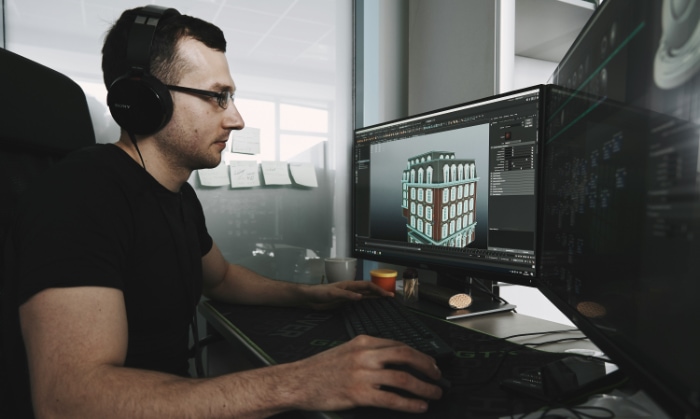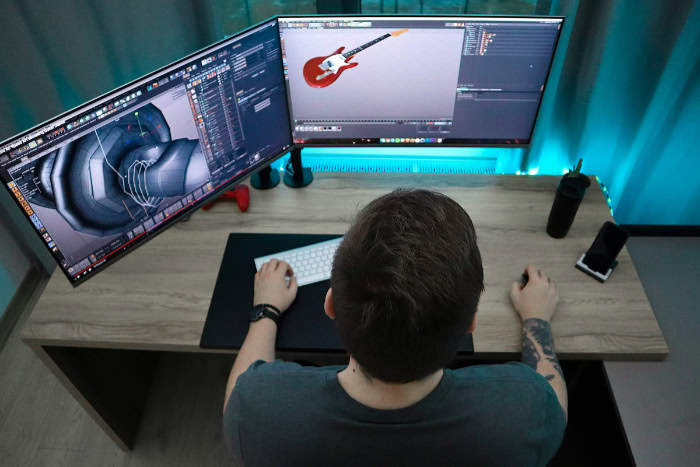2D vs. 3D Animation: Pros, Cons, and Best Uses Explained

Animation pulses through our screens, bringing stories to life in movies, games, advertising, and classrooms alike. Deciding between 2D and 3D animation can shape not only how a project looks but also how it feels and connects with its audience.
Some creators chase the charm and creative freedom of 2D’s hand-drawn worlds, while others seek the immersive realism and versatility of 3D sculpted environments. Each style offers distinct strengths, challenges, and tools, making the choice both exciting and crucial.
Fundamental Differences in Style and Technique
Animation styles are as varied as the stories they tell. The choice between 2D and 3D influences not only the visual appeal but also the entire process of creation.
Each form presents a unique approach to art and motion, drawing on distinct traditions and technologies to craft memorable experiences for audiences.
Visual Aesthetics
2D animation is often celebrated for its flat, hand-drawn, or vector-based look. Artists can create worlds that feel charming and accessible, using bold lines, stylized shapes, and vibrant colors.
The simplicity of 2D lends itself well to exaggerated expressions, creative backgrounds, and unique character designs. This style often evokes nostalgia, reminding viewers of classic cartoons or comic books, yet it also offers limitless possibilities for inventive visuals that break free from reality.
On the other hand, 3D animation embraces depth, volume, and lifelike detail. Environments and characters exist in a three-dimensional space, allowing for dynamic lighting, intricate textures, and realistic movement.
Scenes can range from photorealistic to highly stylized, depending on the project’s vision. The ability to simulate real-world physics and materials gives 3D animation a powerful edge in creating immersive and believable experiences.
This depth not only draws viewers into the action but also enhances the emotional weight of a scene.
Creation Process
The techniques behind each style differ dramatically. 2D animation builds motion through frame-by-frame drawing or tweening, where artists meticulously design each individual frame or let software interpolate between key frames for smoother transitions.
This approach can be labor-intensive, especially for complex actions, but it grants animators precise control over every movement and nuance. The result is often an expressive and highly personalized animation that reflects the artist’s hand.
3D animation, in contrast, begins with modeling, where artists sculpt characters and environments in a digital space. Once the models are complete, they undergo rigging, which involves creating a virtual skeleton to allow realistic movement.
Animators then use keyframes and advanced software tools to bring models to life, guiding performance with precision and realism. The final step is rendering, a process that generates frames by calculating lighting, shadows, and textures, resulting in a polished and visually stunning animation.
This pipeline allows for reusing assets and making adjustments more efficiently, especially in projects with recurring characters or locations.
Practical Considerations: Cost, Time, and Tools

Choosing between 2D and 3D animation often comes down to more than just artistic vision. Budget, timelines, and technological needs play a major role in determining the most suitable approach for a project.
Each style comes with its own financial and technical demands, influencing everything from the scale of production to the resources required for completion.
Budget and Timelines
2D animation typically offers a cost-effective solution, particularly for smaller projects or productions on tight schedules. Working with simpler workflows and fewer software requirements allows artists and studios to move quickly from concept to finished product.
Projects such as commercials, explainer videos, or short-form content often benefit from 2D’s ability to deliver high-quality visuals without significant upfront investment. The faster turnaround time becomes especially valuable when deadlines are strict or frequent updates are necessary.
3D animation, on the other hand, tends to require a larger initial outlay. Modeling, rigging, and rendering demand more time and specialized talent, which can drive up early costs.
However, 3D offers efficiency for larger projects where assets can be reused, modified, and repurposed over time. Once a character, object, or environment is built, it can appear in countless scenes and projects with minimal additional effort.
This makes 3D especially appealing for ongoing series, video games, or brands planning consistent visual content across multiple campaigns.
Software and Hardware Requirements
The tools used in each animation style influence both workflow and overall expenses. For 2D animation, software like Adobe Animate or Toon Boom Harmony remains accessible to a wide range of creators.
These programs can run efficiently on standard computers or tablets, keeping hardware costs low and allowing artists to work from virtually anywhere.
In contrast, 3D animation relies on robust programs such as Blender, Maya, or Cinema 4D, each demanding significant processing power. A powerful graphics card and ample memory are essential for smooth modeling, texturing, and rendering.
As a result, hardware investments can quickly add up, especially for teams aiming to produce visually intensive films or interactive media. Upgrading to high-performance computers becomes a necessity, further shaping the project’s overall budget.
Industry Applications and Audience Impact

Animation plays a vital role across various sectors, with both 2D and 3D techniques offering unique advantages tailored to different artistic visions and business needs. The choice of style often aligns with project objectives, platform requirements, and the audience’s expectations, shaping how stories are told and experiences are delivered.
Best Use Cases
2D animation continues to thrive in projects where clarity, simplicity, and stylistic flair are priorities. Explainer videos benefit greatly from 2D’s approachable visuals, making complex ideas easy to grasp for broad audiences.
Indie game developers often choose 2D for its distinct charm, manageable production timelines, and opportunities for creative expression without heavy technical constraints. Comic-style storytelling, whether for web, television, or branded content, also leans on 2D animation’s ability to deliver bold visuals and exaggerated characters that engage viewers and drive narratives with humor or emotion.
Meanwhile, 3D animation has become the standard for large-scale productions that demand realism, depth, and technical sophistication. Feature films, particularly those targeting mainstream cinemas, rely on the immersive worlds that 3D techniques can build.
AAA video games harness the power of 3D for interactive environments and lifelike characters that let players feel completely absorbed in the experience. In industries like architecture, 3D visualization allows designers to present structures in realistic detail, offering clients clear previews of finished projects and enabling more dynamic pitches and presentations.
Audience Engagement
The relationship between animation style and audience engagement cannot be overstated. 2D animation often resonates with those seeking nostalgia, drawing on memories of beloved cartoons or classic games.
Its stylized and sometimes whimsical aesthetics can help explain abstract or educational concepts, making it a favorite in content aimed at children, students, or anyone who appreciates creative simplicity.
3D animation caters to audiences looking for immersive and technologically advanced experiences. The realistic visuals and dynamic camera work appeal to viewers who expect cutting-edge entertainment, such as teenage and adult gamers, moviegoers, and professionals evaluating sophisticated designs.
For mature or tech-centric demographics, 3D’s ability to simulate reality or create breathtaking fantasy worlds enhances emotional connection and audience investment.
Creative Flexibility vs. Technical Realism

Animation is a dance between artistic ambition and the practicalities of technology. The choice between 2D and 3D animation can shape the level of creative freedom or realism a project achieves, affecting the flow of storytelling, the expressiveness of characters, and the possibilities for interaction with the viewer.
Artistic Freedom
2D animation thrives on the absence of physical constraints. Artists have the liberty to bend and break the rules of the real world, leading to vibrant exaggerations and surreal visuals.
Characters can stretch, squash, or morph in impossible ways, giving each scene a unique personality and emotional punch. This level of creative control often results in a highly stylized look that stands out, whether the narrative takes a whimsical tone or explores more abstract ideas.
In contrast, 3D animation gravitates toward realism, often constrained by the laws of physics and lighting. Models move within a defined space, making subtle gestures and details feel more believable.
While stylization is possible in 3D, the technical foundation of the process favors scenes that reflect real-world behaviors and interactions. For projects that require complex environments or high believability, these limits become a strength, anchoring fantasy worlds in a sense of reality that deeply engages the audience.
Interactivity and Adaptability
Modern audiences expect dynamic experiences, especially in games and interactive media. 3D animation excels in this area, providing flexible camera angles, immersive 360-degree environments, and seamless integration with technologies like virtual and augmented reality.
The ability to manipulate scenes and perspectives on the fly opens up new dimensions for storytelling and player engagement, making 3D the go-to choice for interactive applications.
On the other hand, 2D animation typically works within predefined camera perspectives. Its strength lies in guiding the viewer through a carefully crafted, linear story.
The format suits projects that prioritize narrative flow over interactivity, such as classic animated films, web shorts, or educational videos. While modern tools can simulate camera movement in 2D, the results remain distinct from the spatial authenticity that 3D provides.
Conclusion
Both 2D and 3D animation offer distinct artistic styles, unique workflows, and practical considerations that can shape the direction of any creative project. Visual aesthetics, production methods, costs, and technical requirements all play a part in determining which approach fits specific goals and budgets.
Applications in entertainment, games, marketing, and education reveal how each style caters to different audiences, either through nostalgic charm or immersive realism. Weighing artistic freedom against technical realism, along with the level of interactivity required, helps clarify which animation style best aligns with your vision.
A thoughtful match between medium, message, and audience will elevate your work, proving that 2D and 3D are not rivals but complementary tools in the world of animation.


